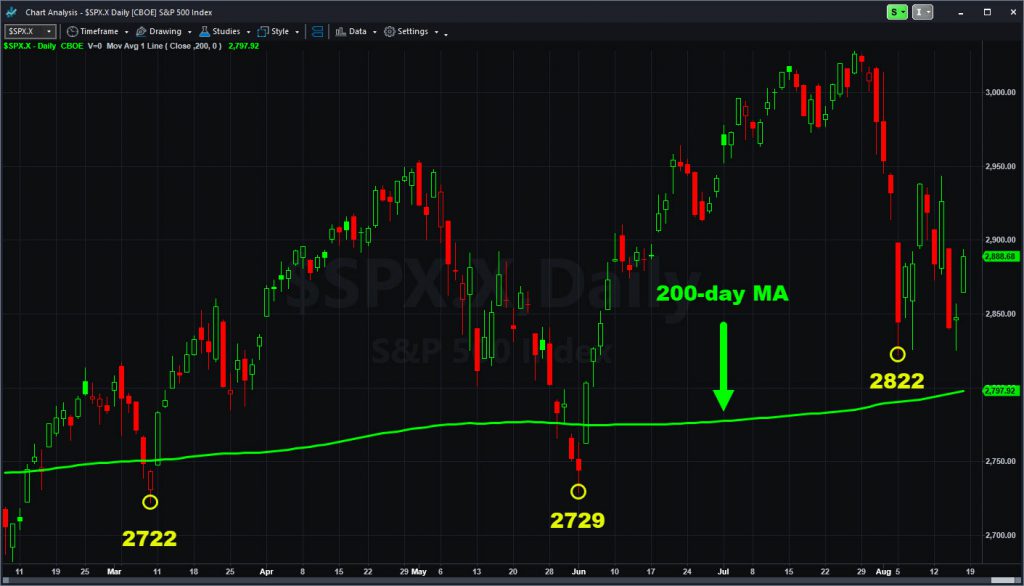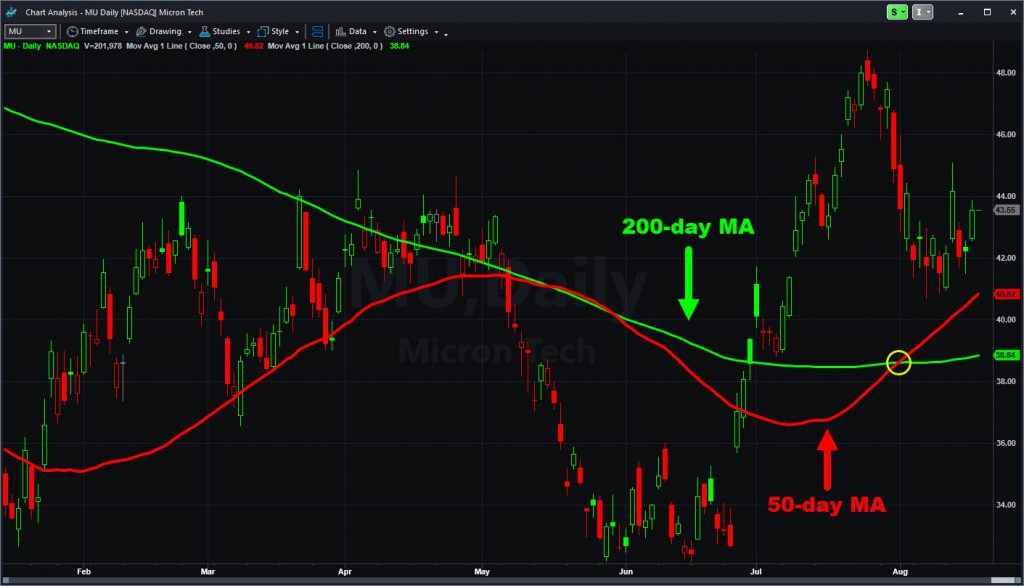Stocks fell again last week as economic fears continued, but the Federal Reserve may lift spirits soon.
The S&P 500 declined 1 percent between Friday, August 9, and Friday, August 16. It was the third straight losing week and kept the index on pace for its second losing month of the year.
The inverted yield curve was the biggest story. The condition briefly appeared on Wednesday, hammering bank stocks and the broader Dow Jones Industrial Average. Pessimists say it predicts recessions. But they looked silly the next day when a strong retail sales report caused forecasters to raise growth estimates for the U.S. economy.
What’s going on? First, interest rates have been falling because of weakness overseas. Don’t forget that the yield curve inverted after terrible Chinese and German data including industrial production, gross domestic product, retail sales, and fixed investment.

Second, the U.S. consumer is strong and seems to be getting stronger. July’s retail sales were more than twice estimates for the second month in a row. That’s helping offset softer business investment and manufacturing, which are smaller parts of the economy.
Apple Bolsters Technology
One of the interesting things about last week was the wide difference in performance within the S&P 500. Energy led to the downside as inventories rose and the weak global growth hurt demand. There are also growing worries this sector may face a wave of bankruptcies.
Financials crashed on the yield curve and bad earnings hammered retailers. Just because consumers are spending more, doesn’t mean they’re spending it at Macy’s (M) or Kohl’s (KSS). It says a lot when retailers slide to multiyear lows despite retail sales crushing estimates.
But then Apple (AAPL) rose almost 3 percent after President Trump withdrew tariffs on some Chinese products — including iPhones. That caused the entire technology sector to barely dip at all last week.
Consumer staples were the best-performing major sector. Other safe-havens like utilities and bonds also gained, although gold miners faced profit-taking after two months of steady gains.
Wal-Mart Tops the Rankings
Wal-Mart Stores (WMT) rose the most in the S&P 500 last week, up more than 5 percent after crushing estimates and raising guidance. The discounting giant’s results suggested it’s gaining market share at the expense of other merchants, especially online.

Two semiconductor companies, Lam Research (LRCX) and Micron Technology (MU), were close on WMT’s heels. Neither had any news.
A trio of traditional retailers led to the downside: Tapestry (TPR), the parent of Coach, cratered 27 percent, M plunged 18 percent and Nordstrom (JWN) fell 14 percent.
Jerome Powell at Jackson Hole
While the S&P 500 has been under pressure all month, the index has remained above its 2822 low from August 5. If that level holds it would represent the third consecutive higher low since March 8. (See chart above.)
The recent volatility has partially resulted from a lack of bullish catalysts on the calendar. After all, there were few positives left after the Fed cut interest rates on July 31. Corporate earnings have also dwindled.
The forward calendar remains pretty quiet as the market enters the quiet summer-vacation period. Jerome Powell’s speech on Friday morning is the biggest scheduled event.
Home Depot (HD), Sea (SE) and TJX (TJX) announce quarterly results tomorrow morning.
Wednesday brings crude-oil inventories, existing home sales and minutes from the last Fed meeting. JWN and L Brands (LB) report numbers after the closing bell.
Attention shifts to the Fed’s annual symposium in Jackson Hole, Wyoming, on Thursday. Initial jobless claims and Salesforce.com (CRM) earnings are also due.
Friday brings new-home sales and Fed Chairman Powell’s speech at 10 a.m. ET. Comments confirming more rate cuts would likely be positive for stocks.
In conclusion, markets remained volatile last week. But now attention may shift toward a friendlier message from the Fed.


























